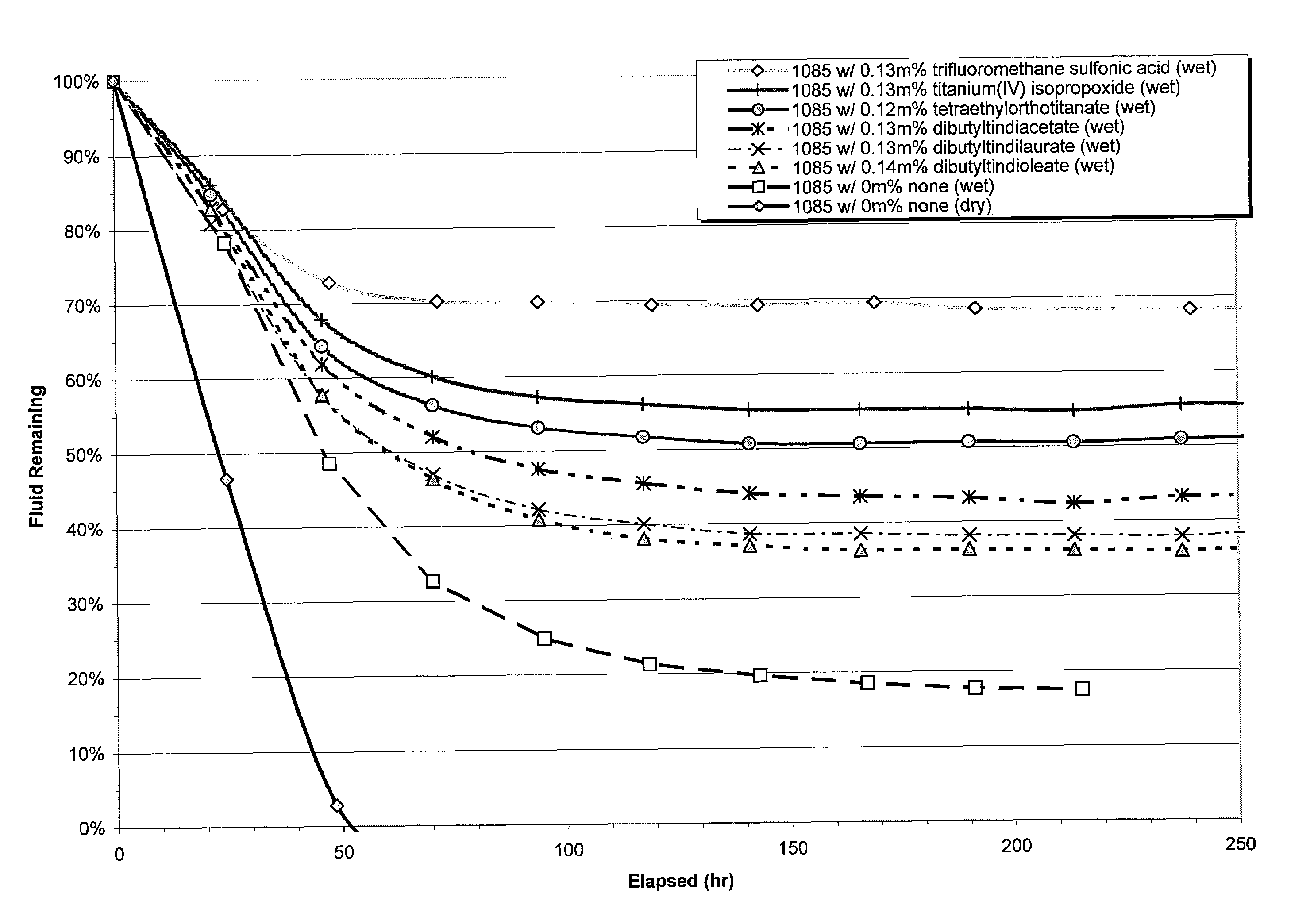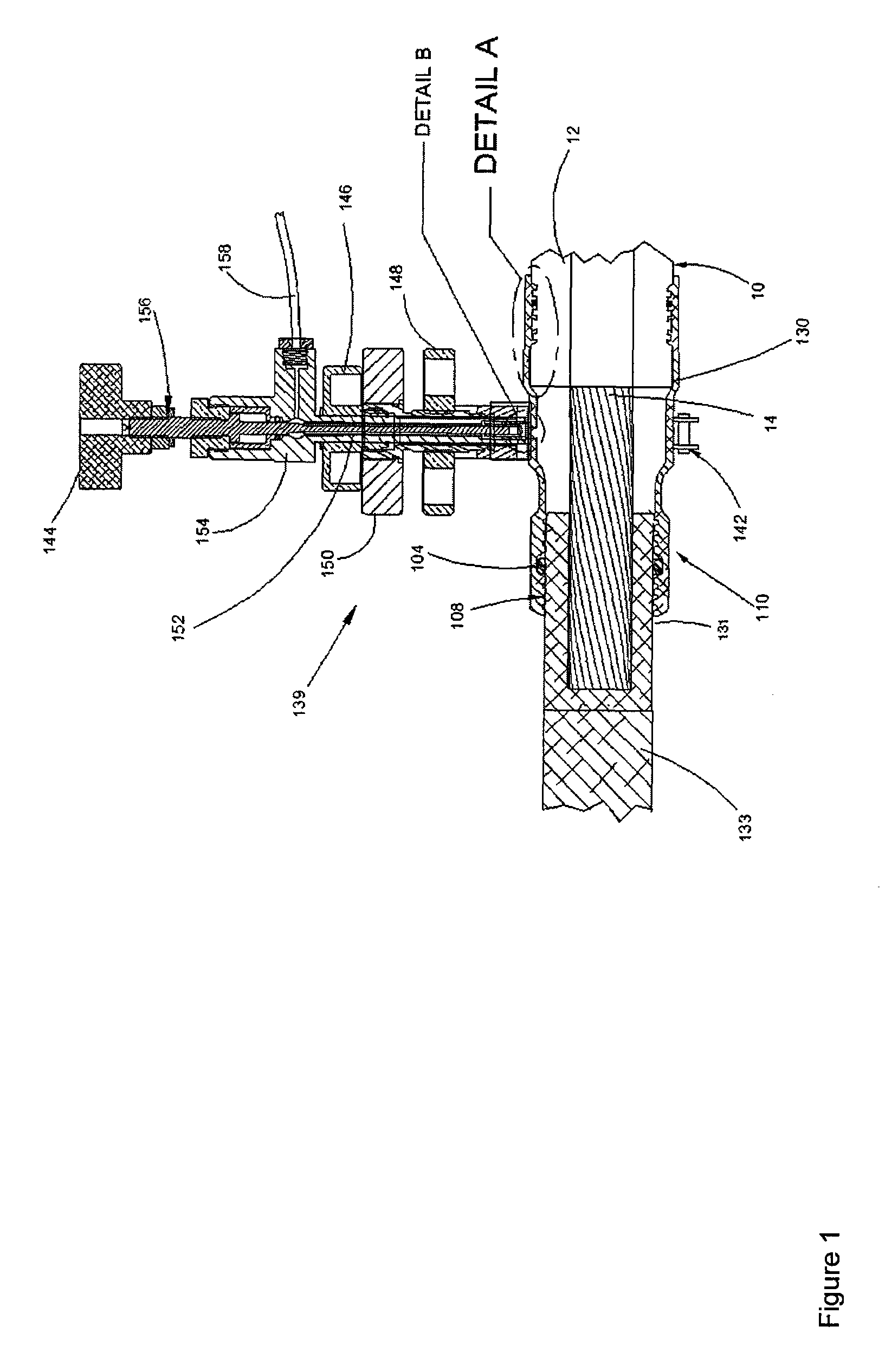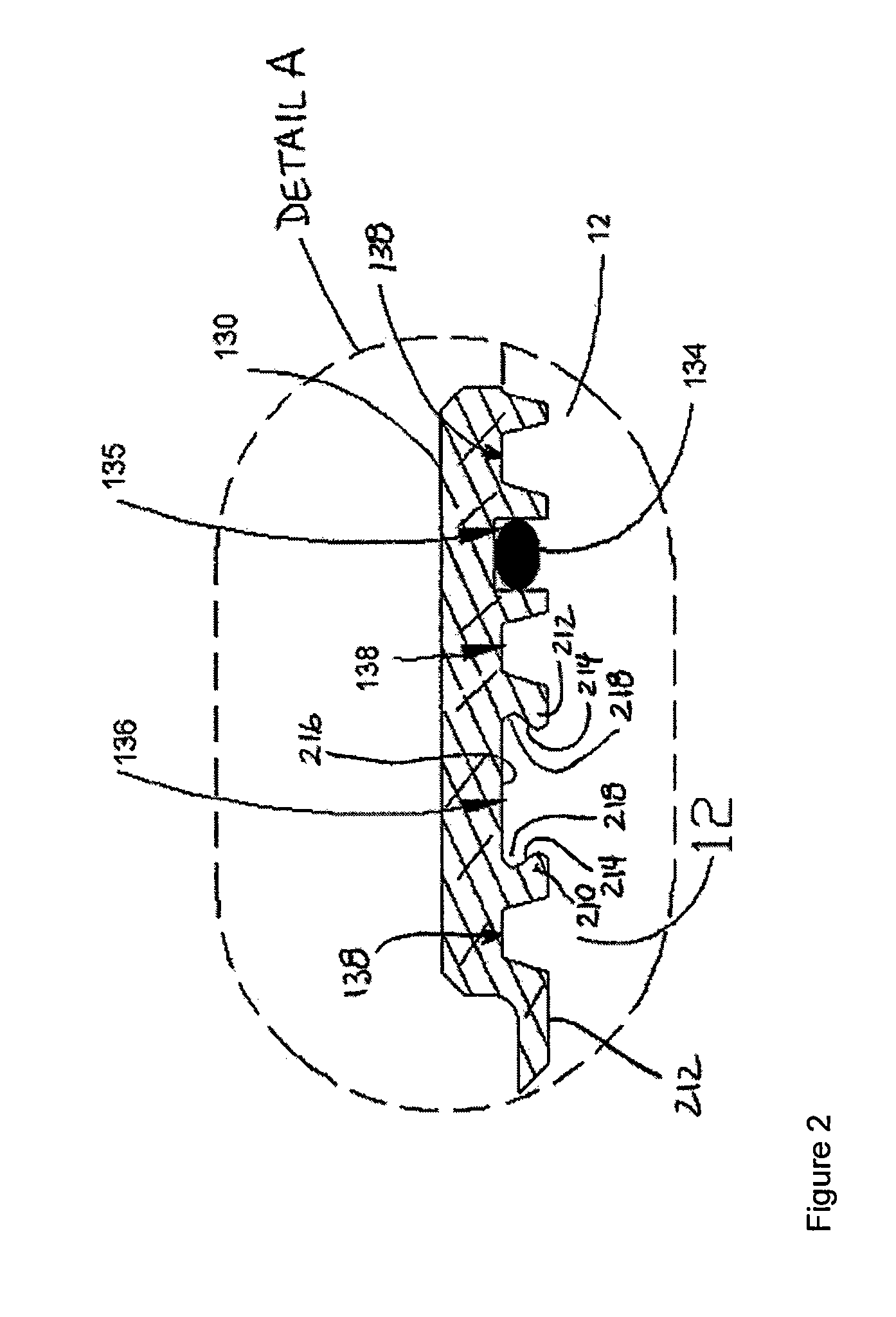Acid-catalyzed dielectric enhancement fluid and cable restoration method employing same
a dielectric enhancement and acid-catalyzed technology, applied in the direction of liquid organic insulators, plastic/resin/waxes insulators, coatings, etc., can solve the problem of water difusing into the cable from the environmen
- Summary
- Abstract
- Description
- Claims
- Application Information
AI Technical Summary
Benefits of technology
Problems solved by technology
Method used
Image
Examples
examples
[0101]An approximately 12 inch-long polyethylene (LDPE) tube having an inner diameter (ID) of about 1 / 16 inch and an outer diameter (OD) of about ⅛ inch was sealed at one end by melting the end shut with a soldering iron. The tube was weighed and an approximately 11.5 inch-long aluminum wire having a diameter of about 0.0508 inch was weighed and inserted into the tube. This combination has approximately the same relative geometry as a typical AWG 1 / 0, 15 kV, 100% insulation cable with respect to the ratio of interstitial volume to polyethylene volume and is therefore a good surrogate for the latter; it is referred to as a “model cable” herein. Further, it should be noted that the XLPE (crosslinked polyethylene) generally used in cables is LDPE (low density polyethylene) and it is known that there is little difference between the permeation properties of these two polymers. A numbered rectangular aluminum identification tag was weighed and the tube / wire combination was inserted throu...
PUM
| Property | Measurement | Unit |
|---|---|---|
| residual pressure | aaaaa | aaaaa |
| pressure | aaaaa | aaaaa |
| residual pressure | aaaaa | aaaaa |
Abstract
Description
Claims
Application Information
 Login to View More
Login to View More - R&D
- Intellectual Property
- Life Sciences
- Materials
- Tech Scout
- Unparalleled Data Quality
- Higher Quality Content
- 60% Fewer Hallucinations
Browse by: Latest US Patents, China's latest patents, Technical Efficacy Thesaurus, Application Domain, Technology Topic, Popular Technical Reports.
© 2025 PatSnap. All rights reserved.Legal|Privacy policy|Modern Slavery Act Transparency Statement|Sitemap|About US| Contact US: help@patsnap.com



